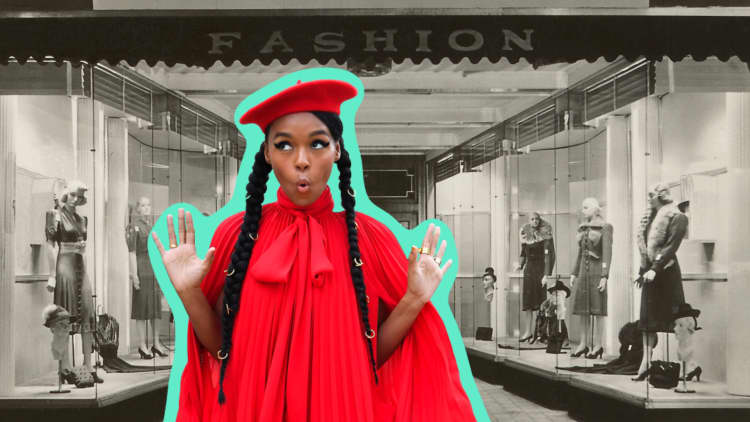Shopping at thrift stores is typically pegged as a way to not only score unique clothing, but to save a bit of money. Rather than spending $40 on a new pair of jeans, you can scoop up a second-hand pair for less than $10.
But Grammy nominee Janelle Monáe, 33, says that before she made it big, combing through the racks for her next vintage find wasn't the money saver it was intended to be.
"If I had $500, I was spending half of it in the thrift store," Monáe tells CNBC Make It. "I wasn't saving my money."
The singer, actress and producer is known for her white and black androgynous style and playful ensembles. But she says it took years for her signature look to evolve, and as her fashion sense changed, she continued to buy more new-to-her items at thrift stores.
"That was my vice, I always wanted to have something different," she says. "You go through this store, you get something vintage — nobody's going to have this, right? But then you don't really have any money."
How to cut back on impulse spending
Monáe is far from the only person to overspend on nonessential items: U.S. consumers spend up to $5,400 on impulse purchases each year, with clothing being the second biggest category for spur-of-the-moment buys.
Here are three tips for cutting back if impulse spending is your financial vice.
1. Figure out why you want to cut back your spending
Maybe you have a savings goal in mind, like a house or vacation, or you just want to own fewer things. Whatever your reason, it will be easier to stick to if you write it down or tell someone else.
2. Unsubscribe from retailer emails
Daily reminders in your inbox of all the things you could buy can make abstaining from spending difficult. Eliminating the temptation altogether could make it easier to save.
3. Wait 24 or 48 hours before making a nonessential purchase
If you can fight off the impulse for a day or so, you might realize you really don't need the product after all. And if you do find yourself shopping, calculate how many hours of work it would take you to pay for your purchase. If you make $15 per hour and the items you want to buy add up to $100, that's more than a day's worth of work.
Monáe also says growing up in a working class household — her mother was a janitor, her biological father was a garbage man and her stepfather is a postal worker — made her work harder to become the artist she is today.
Spending her money on clothes rather than saving was her biggest financial mistake, she says, but she's made it a point to learn from her parents and a host of mentors to get her finances in check now.
"When you don't really have any money, you can't save any money going into thrift stores," she says.
Don't miss: How Janelle Monáe's working-class parents encouraged her to "be better"
Like this story? Subscribe to CNBC Make It on YouTube!




